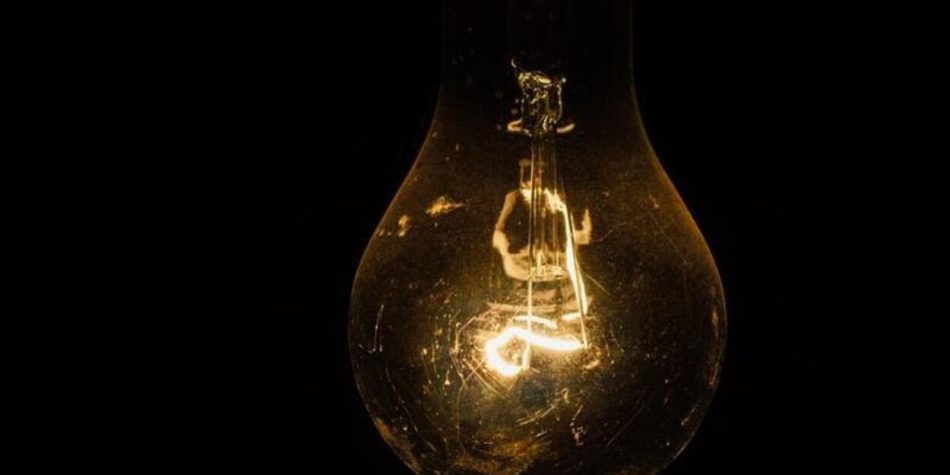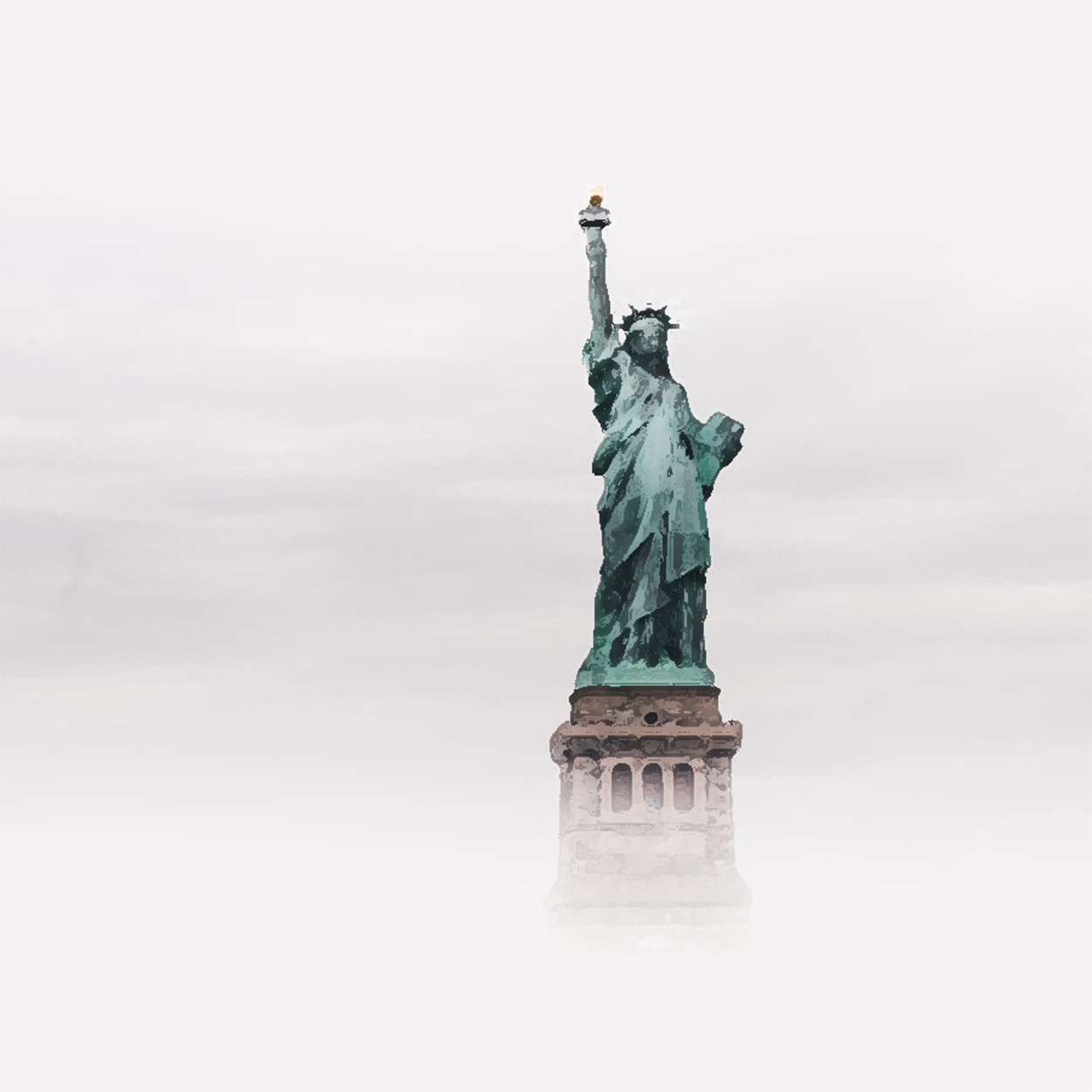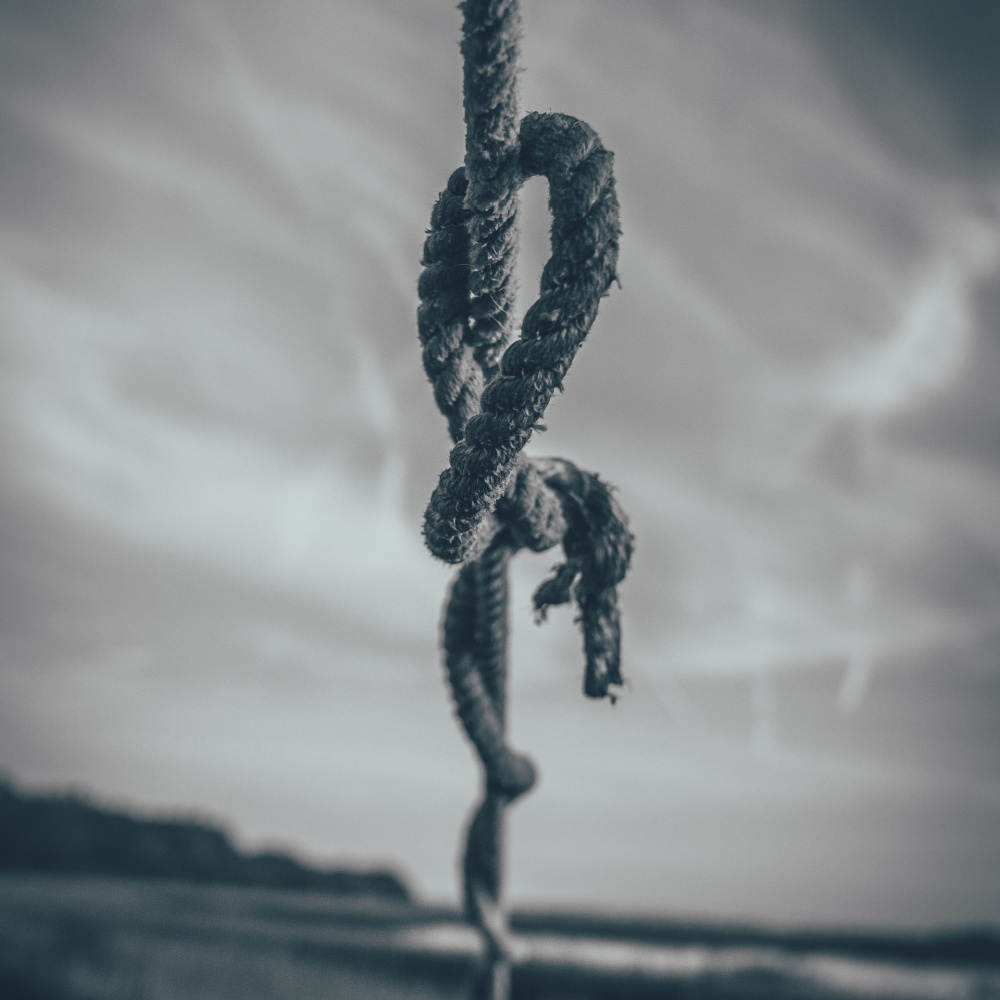Imagine yourself trapped in a totally dark, unfamiliar room. After you enter, the door locks behind you. Fortunately, there are two things in your hands. One is a state of the art, expert-grade laser light that illuminates in brilliant detail a round circle about an inch diameter. The other is an old school, pedestrian 25-watt bulb in its socket, with a sad little 5-foot cord. Once you feel around and discover an electrical outlet, you can plug each device in. Which will be of more use as you try to discover what is in the room and how you can get out: the dim bulb or the brilliant laser?
In a way, this is the circumstance that we find ourselves trapped in during the current pandemic. We are in a strange place that is new to us. We have the benefit of experts, highly credentialed guides, who illuminate in detail certain medical aspects of our new environment. But we also have the common sense of ordinary, un-credentialed people who can help us see the much bigger picture of where we are, even if the details are not sharp and the light is dim. In our current predicament, it is the lightbulb that we need, despite all the attention that is paid to the laser.
The big picture that we face is becoming easier to see with the passage of time, as our eyes grow accustomed to our imperfect but useful little lightbulb. The experts, with their laser, provide us with more and more information about a portion of the problem that we face, but they don’t always seem to appreciate that our goal is to get out of the room and return to a place that we know. Indeed, at this point, it seems difficult to clearly understand what the goal of the experts has become.
There is nothing unusual about living in a world full of risks
None of this is intended to suggest that we should not pay attention to experts, of course. They have a great deal of specialized knowledge that is important and to which we need to pay attention. The point of this little parable is about understanding the broader framework for dealing with our problems and how we ought to look at the political and policy process by which we develop the criteria and benchmarks for our goal, which is returning to what we all think of as normal. In real life, there is not a binary choice between the laser and the lightbulb–we are fortunate to have both the benefit of experts and of the views from a broad array of the public. What we need to strive for is balance; availing ourselves of the knowledge and recommendations of experts, but also looking at the broader view to preserve the political structure that has served us so well over time.
A Strange New Risk is Added to Our Already Risky World
Just over three months ago, we lived in a world where we were comfortable with a very wide variety of risks that we deal with daily. We drive cars and run the risk of death or injury. We go to workplaces that are far more dangerous than staying home. We interact with other people and run the risk of getting sick from their germs. In short, there is nothing unusual about living in a world full of risks; it is inevitable, and we had made our peace with it.
At least as importantly, decisions we made about risk were ours to make. As free people living in a democratic republic, decisions about how to live our lives, run our businesses, patronize establishments, drive cars, attend places of worship, and on and on, were ours to make.
When the COVID-19 virus was declared a pandemic, we suddenly faced a new risk, one that was believed to be different not in kind, but in severity, from those we knew. The experts focused laser-like on the potential health impacts, as they tried to quantify how deadly the disease was and whether its spread could be slowed or stopped. Their initial analysis was that the disease was both very deadly and extremely difficult to contain and was therefore likely to sicken and perhaps even kill millions, or at least hundreds of thousands. Here was a new risk that they could not quantify as falling within tolerable levels—in fact, it seemed to exceed those levels by a lot. Accordingly, what was needed was to take steps that would at least address what seemed to be the certain need for vastly more health care resources to deal with the virus.
The Responses to the New Risk of Uncertain Duration
There were two necessary responses we were told. One came from medical experts and the other, in tandem with the first, came from political and policy experts. While there seemed to be an implication that these responses were for the short term, the criteria for declaring the level of risk to be back to acceptable levels were vague, if mentioned at all.
The necessary medical response, the experts said, was to slow the progress of the disease to avoid overwhelming the health care system. “Flattening the curve” meant slowing the progress of the virus so that hospitals and medical personnel would be able to cope with the influx of patients from the disease over a long period of time. Eventually, most people were expected to get sick from the virus, but if its progress was slowed, at least everyone who needed health care would get it, saving as many lives as possible.
While there were a few outliers, the seeming consensus among the experts was that keeping as many people “sheltering in place” as possible was the proper response to slowing the progress of the virus, and world-wide, most developed countries took this approach. Whether or not this response worked, or was even wise, is not yet understood, but the progress of the disease seemed to slow, hospitals and the medical system were not overwhelmed, and the curve flattened.
But the other necessary response, required to implement the recommendations of the medical experts, was a legal response from our political and policy experts. Most of our governors, mayors, and even unelected government officials almost no one had ever heard of but with “health care” in their job descriptions, took on emergency powers of the most sweeping variety. They closed businesses, ordered most of the population to stay home, decided for themselves who and what was “essential,” and largely dismissed the relevant legislative bodies that served as checks on their authority (many of whom, unfortunately, seemed relieved to disperse on their own motion). They chose the medical experts with whom they would surround themselves and began a mantra that they would be guided by “data and science.” The underlying presumption was that the risk was so novel, deadly, and dangerous, that these extraordinary, flagrantly undemocratic measures would need to continue until the crisis had passed. The other presumption was that the public health experts whom they chose, or who were in public health positions in government, or both, were the best people to provide them and us with the guidance needed to carry them through the emergency.
A Bit of Dim Light Begins to Show the Outlines of the Room
Meanwhile, all of us learned more and more about the risk profile of the disease. The most vulnerable were the elderly, especially in nursing homes (typically people in their late 70’s and above, often frail and needing support). Next were older people with underlying health conditions, and finally, people under 70 who also had health issues, especially diabetics, those with respiratory conditions, and (although it seems to be considered callous or impolitic to say this in a straightforward way) the obese—a distressingly high percentage of the population. The young are much less vulnerable, although there may be related inflammatory diseases among a small number that are related to this virus.
We have also learned that there are treatments and protocols that are improving the odds for those who become sick. Crash programs are underway to create a vaccine, but those may not come to fruition in less than a year and may never be fully effective or totally safe for all.
But if people who have the virus (and appear healthy and don’t even know they have it) may spread it, how do we continue to slow the spread?
But the real wild card revealed over the last few months was both good and bad news. The good news is that large—perhaps extremely large—numbers of people who are infected by the virus are either totally asymptomatic or have such mild cases that they confuse the disease with allergies or a common cold. The bad news is that there is a concern (although now apparently in dispute) that these people can still transmit the disease if they are out and about, and unwittingly infect the vulnerable for whom the virus is anywhere from very serious to deadly.
So while it is very encouraging that the risk profile of the virus is much better than had been feared, and we currently believe that about 99% or so of those who become sick will recover (with the numbers better in the low-risk group and significantly worse in the higher risk group), the experts saw a conundrum. Historically, the way to control disease is to quarantine the sick, which is synonymous with those who exhibit symptoms. But if people who have the virus (and appear healthy and don’t even know they have it) may spread it, how do we continue to slow the spread of the disease once most of the population is no longer sheltering in place?
It was also disconcerting to learn that there were lots of experts and that some of them had divergent opinions from those that were looked to by the policymakers. So, if policymakers were relying on data and science, it was not so certain that all the experts saw the data and science the same way, and that meant that the policies that were based upon them were potentially flawed.
The Premise on Which the Necessary Responses Were Based Has Changed
What is easy to miss amidst all that has transpired is that certain aspects of the fundamental premises behind the two necessary responses no longer seem to be correct. While by no means do we have perfect information, the risk can be quantified within a reasonable range, and can even be broken down with substantial precision among risk groups. Roughly two-thirds of the population has a similar risk from the virus that they have from any of the vicissitudes of life; the risk is hardly zero, but it is just another very unlikely but still possible cause of serious injury or death that comes our way. For others, myself included, among those who are aging toward the inevitable, it is another example of something that was of slight concern when we were young but now looms as considerably more dangerous. This is also true of catching a multiplicity of other diseases, driving cars, climbing ladders, or even walking stairs.
We have also learned that the medical response has consequences that may be as bad, or even worse, than the consequences being avoided. Lockdowns have resulted in sharp increases in drug use, alcohol abuse, loneliness and despair leading to suicide, child and spousal abuse, untreated medical conditions, bankruptcy, loss of jobs, and loss of schooling. This is just part of an increasingly dreary list of grim outcomes that will, among other adverse consequences, likely result in a toll of addiction, disability, and death among the entire population (not just the third at risk for the virus) that may exceed COVID-19 deaths. At the same time, at a governmental level, we have accumulated vast debt that will have negative effects at the local, state, and federal levels for years to come.
In addition, the frame from which the situation is viewed—for purposes of our parable, the choice between the laser or the lightbulb—is different depending upon social circumstances. For those who can work from home via the internet, or whose jobs are otherwise protected, the risk/reward calculus is quite different from those who are dependent on going out into the world to earn a living. Similarly, small business owners who cater to the public in restaurants, bars, or gyms are in a much different position from those whose business has a different model. While both groups suffer significantly, deprived of visiting friends and family, sports, and group activity, the disastrous prospect of economic extinction is quite different. One group can more easily afford to continue to limit its risk-taking; the other cannot. Thus, the former group is better situated—and thus more inclined—to continue to rely on the experts to reduce the risk as much as possible, while the latter group is increasingly unwilling to defer to the experts and reassess the situation based on its own perception of the evidence and how to best balance two sets of serious risks. Regardless of our individual circumstances, it is only fair that we give full and fair consideration to the frame of those who have been most adversely affected by this crisis and insure that they have input into decision-making that affects them so drastically, just as our democratic process has always done.
The Three Big Problems That Have Now Become Apparent
While the medical experts continue to refine what they know from their laser-like focus, those of us operating with our dim bulbs now see three things that are deeply problematic as we review the situation in the partial light of imperfect information and limited understanding. We need to return to the normal lawmaking process; we should agree that the deprivation of rights must end as soon as possible; and, to that end, we must agree on the goal of our policies together with specific, measurable criteria.
First, the necessary political response should no longer be accepted as such. While serious public health issues remain, based on historical parallels (the polio crisis, SARS, H1N1, not to mention risks accepted as normal 75 and more years ago), the level of risk to most of the population no longer justifies an ongoing state of political emergency. The normal process of lawmaking needs to return. Legislatures need to get back in session and serve as a check on executive power. Governors, mayors, and others should no longer be imposing laws by executive fiat. Trade-offs involving life and death decisions are being made without adequate discussion. The political leaders who issued emergency rules would be most extraordinary if they did not continue to pursue and defend their stringent policies, even when contrary evidence emerges, and they may be proven right, but that is not certain. We need to bring back our system of checks and balances so that other voices can be heard.
Despite its many shortcomings, political give and take allows these matters to be addressed in a representative way. It has always been the case that political leaders with unchecked power tend to act in ways that are arbitrary, biased toward favored constituencies, and against those that are not, and contrary to constitutional values. They make claims to be acting based on science and data, but there is often a failure to acknowledge that the science and data is uncertain, or an unwillingness to explain precisely what data and scientific studies they are relying on and how they are relevant to their decision-making. If some decisions are merely their best guess in the absence of definitive guidance, that may be necessary but it would actually be reassuring if they were to be open about it. This is true even of those with the purest motivations, just as it is with the most partisan. Our system of government was wisely structured on the premise that leaders with the best and highest of motives can fail as egregiously as those with the worst.
It is essential that this reversal of rights end as soon as possible.
Second, we must recognize that due to this crisis, most of our state and local governments have reversed the fundamental assumption on which our society operates: that each of us has the right to go about our lawful business and make our own decisions about the degree of risk that we will take. Instead, we are each being treated as a potential threat to our fellow citizens who need to be controlled and monitored. Obviously, if we are not sick, we are not a threat. But on suspicion of being sick and therefore a danger to others, we have lost most of our rights. Not only are we not presumed innocent until found guilty, but we are being deprived of our rights even if we can demonstrate that we are innocent—that is, not sick. While it is not unreasonable to conclude that this was initially justified by the magnitude of this emergency, it is essential that this reversal of rights end as soon as possible.
Third, because we have turned on their heads our normal legal and political rules, it is critical that we agree upon what the goal of our policies are, and when the emergency has ended. Since the goal is no longer flattening the curve, and “stopping the spread” is not possible without a vaccine or herd immunity (if even one or both of those would be completely successful), what is it? Logically, it would seem to be returning to an acceptable level of risk. That means agreeing upon what that level of risk is. Is it the death rate from the virus that would put it at or below that for a severe flu? Is it a certain number of cases, regardless of severity? It is time to discuss the point at which our normal freedoms will return.
If we have learned anything from the pandemic it is this: we are never safe from diseases that kill tens of thousands of people and are accepted as part of our regular life. We regularly deal with infectious diseases that kill as many as 80,000 people in a year, and there has never been a suggestion that the legal framework governing our lives should change. Is twice that number sufficient to prompt substantial, ongoing revisions to our system of government? Over 2 million people are injured and about 35,000 killed in car accidents in the U.S. each year; how does that risk compare? The goals need to be specific, numerical targets. As every business student has learned “You can’t manage what you can’t measure.” The public needs to know and agree on what those who have taken over the management of our lives are using as the test (articulated in specific and understandable language), for when it is necessary for us to cede control over our political institutions, our laws, and our lives.
Again, the point is not that we shouldn’t heed experts and take their advice in fighting an infectious disease, or that we ought to flout the well-intended guidance of public officials. The Moral of the story of the laser and the lightbulb is simple. While both lights have their uses, when trying to exit a dark room filled with real dangers, there are advantages to the old fashioned dim bulb that allows you to see the entire room, albeit faintly, over the state of the art laser that lets you see only a small fraction of your predicament. Accordingly, we ought to take advantage of the wisdom that seeing the bigger picture affords us, just as surely as we ought to avail ourselves of the benefits of the advice of the experts.

















